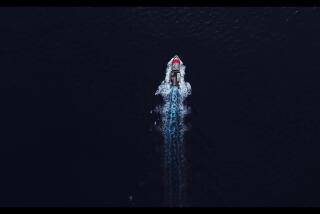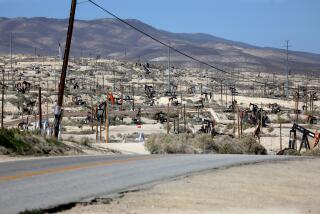In search of ‘Moby-Dick’ off the coast of Long Beach
On Saturday afternoon, I found myself (along with a crew of librarians, readers and friends of the Los Angeles Public Library) on a boat off the coast of Long Beach, looking for whales. The event was part of “What Ever Happened to Moby Dick?” — a monthlong series of events meant to highlight the relevance of Herman Melville’s 1851 novel for a contemporary audience, and especially a Southern California one.
“Moby-Dick,” of course, is the story of Captain Ahab and his obsessive quest for the white sperm whale that, in a previous encounter, took his leg. But it is also a white whale in its own right: labyrinthine, elliptical, digressive, a loose grab-bag of a book in which Melville reflects on everything — from cetology to whaling techniques to meditations on mortality and philosophy, all narrated by a crew member who memorably tells us to call him Ishmael in the novel’s opening lines.
Before I go on, a confession: I have never read the book. It’s one of those classics I’ve carried around with me since college, looking for the right moment in which to take the plunge. I did, however, work my way through Matt Kish’s monumental “Moby-Dick in Pictures,” which features a drawing for every page of the novel, as well as Nathaniel Philbrick’s “Why Read Moby-Dick?,” which makes the case, in 130 concise pages, for Melville’s magnum opus as a book that encapsulates, in the most fundamental sense, American life.
Inspired by Hawthorne, written at a moment of great national division (Melville’s father-in-law was a judge who ruled on the Fugitive Slave Act), it is a novel that continues to speak to us: about obsession, identity and the power of one individual (the revenge-crazed Ahab) to take a dangerous situation and kick it into overdrive.
The whale watch, I should say, was anything but dangerous: The day was warm and the water was calm, barely a whitecap among the swells. We saw a blue whale and a minke, tracking them at a distance as the whalers of the Pequod must have done. Most impressive was a pod of dolphins, 200 or so of them swimming beside the boat, leaping, racing, churning the sea into a kind of boil.
Along with Paul Gilmore, who teaches 19th century American literature at Cal State Long Beach, and Kera Mathes, a marine biologist at the Aquarium of the Pacific, I had been asked to be a speaker; my role involved reading passages from the book over the boat’s PA system as the cohort watched the whales.
“There is no life in thee, now,” I read as we bobbed in the stillness of the ocean, “except that rocking imparted by a gently rolling ship; by her. Borrowed from the sea, by the sea, from the inscrutable tides of God.”
This is what gets overlooked about “Moby-Dick” — indeed, what I have overlooked about “Moby-Dick” — that, for all its fabled difficulty, it is full of gorgeous writing, which is, of course, what draws its readers in.
Here we see the nature of literature: to immerse us not only in the thoughts and observations of a writer but also in his or her specific words. It’s why books continue to live, long after their moment, why even stories such as this one, set in a past that is itself no longer accessible, remain accessible nonetheless. The buzz of implication, E. M. Forster called it, the way a novel can evoke (and, in a very real sense, preserve) its moment, but I prefer to think of it as living literature.
In the end, this is what the whale watch offered, a way to bring “Moby-Dick” to life. We were not carrying harpoons, but we were on a boat, hunting after whales in open ocean with the intention of engaging with them where they live.
For three hours, in other words, we were brought around to thinking about “Moby-Dick” not as a classic of the canon but as an experience. When I got home, I took out my copy of the book and, with the memory of our afternoon on the water fresh in my imagination, opened it to the first page.
ALSO:
Missing the point on Jack Kerouac
A shark’s tale: Reading about great whites
Finding lost Philip Roth in a Provincetown used bookstore
More to Read
Sign up for our Book Club newsletter
Get the latest news, events and more from the Los Angeles Times Book Club, and help us get L.A. reading and talking.
You may occasionally receive promotional content from the Los Angeles Times.







